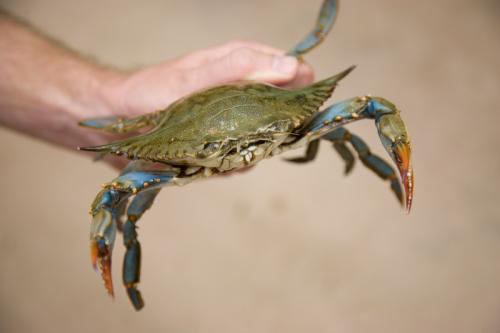For many living forms (including humans) eyes have a vital role to play like locating food or prey, keeping an eye on enemies, selecting an ideal place for nesting and so on. But for the blue crabs, eyes have other distinguished role to play. The eyestalks of the blue crab were known to produce hormone, which is responsible for transforming the adolescent crabs to into a healthy and fully-grown adults. Scientists at the Institute of Marine and Environmental Technology in Maryland have revealed the importance of hormone in the crab motherhood. Interestingly scientists have discovered a new hormone that helps female crabs to develop body parts that are required during mating and also help in raising the young ones.
J. Sook Chung, an associate professor with the University of Maryland Center for Environmental Science says for the first time, scientists have found proof for the existence of hormone in female crabs that control the growth of body parts required during mating and tending for their eggs.
Chung and his team learned that in the eyestalk of female blue crabs (Calinectes sapidus) produce hormone known as crustacean female sex hormone (CSFH) which accounts for the crabs to reach their adulthood and upon reaching adulthood, development of mating and brooding organ.
Russell Hill, Director of the Institute of Marine and Environmental Technology says:
For the first time in crustaceans, a substance that is critically involved in the control of expression of relevant adult anatomic features in females has been identified. This is very significant basic research on a molecular level that also may have practical application in the future, as with most of the important research at IMET.
The CSFH has a very vital role to play in the life of the female crab which mates, only once in their entire lives. The sex hormones help in the growth and development of a pair of receptacles known as spemathecae. These receptacles can store sperm packets or spermatophores, donated by the male crab for up to two years. Upon mating the sperm transferred to these receptacles, is used by the female crab to fertilize their eggs from time to time.
The hormone is also responsible for the hair like external formation of the female’s body, which holds fertilized eggs. More than two million fertilized eggs released by the female crab get stored in a sponge like bundle secured to her abdomen, until the larvae are hatched.
Unlike the human eye, crab eye apart from visualizing plays important role in reproduction, something no one could ever imagine. Such findings show how complex things are in the animal kingdom and how little we have known so far.




